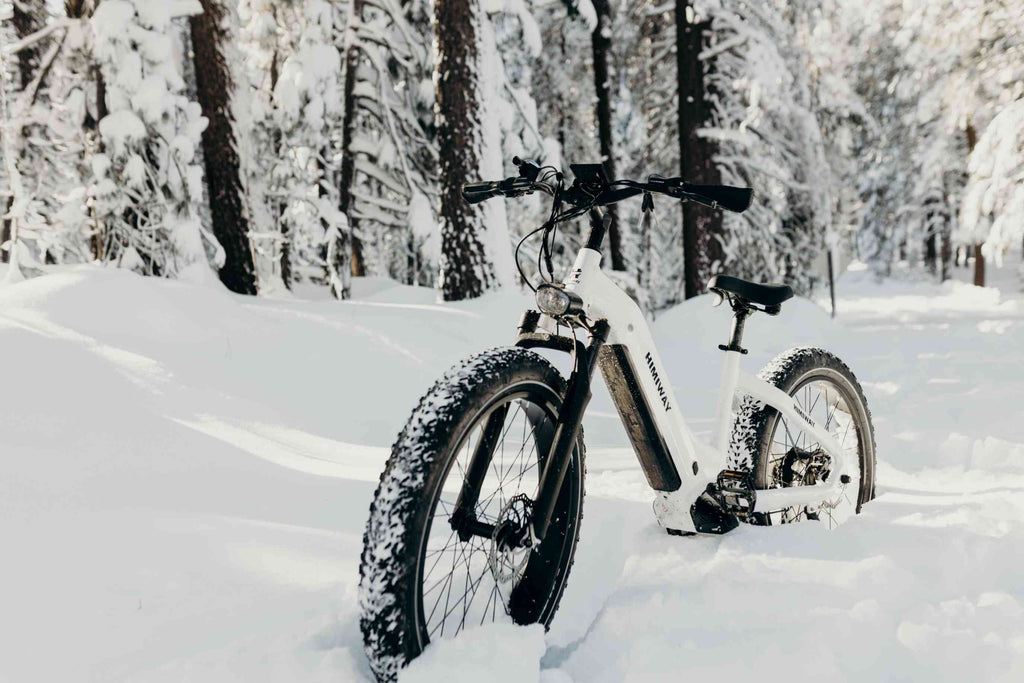
Winter Cycling: Tips for Better Winter Riding
Cycling in Winter can be a great way to stay active and enjoy the outdoors, even when the weather is cold. It is one of the best ways to relax and exercise the body. However, it's important to note some important things like the routes to cycle during Winter and extra precautions when cycling in Winter to ensure your safety.
This can include dressing in layers to stay warm, using lights and reflectors to make yourself visible, and ensuring your bike is in good working order. It's also a good idea to plan your route carefully and avoid cycling in icy or snowy conditions if possible. With the proper preparation, cycling in the Winter can be a fun and rewarding experience. In this article, we'll give route recommendations for cycling in the Winter, safety precautions you should take note of, and a few tips on maintaining E-bikes.
Route Recommendations for Cycling in Winter
Winter is a season of cold and lots of ice, so most times, the roads or cycling routes are usually packed with ice. Cycling on ice is very hazardous, so you must know where to cycle and how to prepare your bikes to tread on such routes. The following are basic route recommendations you can try to have safe and productive cycling in Winter.
- If you don't mind the cold, try finding a nearby trail or bike path that is well-maintained and has minimal snow and ice. Dress warmly and be prepared for potentially slippery conditions.
- Consider purchasing studded tires for your bike. These tires have tiny metal studs that provide extra traction on icy roads, making it safer to ride in winter weather.
- Look for a local cycling club or group that organizes winter rides. Riding with others can be a fun and social way to stay motivated to ride during the colder months.
- If you have a mountain bike, try finding a nearby trail suitable for off-road cycling. The rugged and varied terrain can be a fun challenge and a great workout in the Winter.
- Find a local indoor cycling studio or gym with stationary bikes and participate in a spin class. This will allow you to get your cycling fix without braving the cold weather outside. If you have access to a stationary bike at home, you can also try cycling indoors in the comfort of your home. This can be a great way to stay active during the colder months.

Safety Precautions For Cycling In Winter
Wear a Helmet
The 62% of fatal bicycle accidents resulting from head injuries highlight the importance of wearing a helmet for protection. This is particularly true in the Winter when cycling is hazardous due to ice and snow. When bikers wear helmets, their risk of suffering a head injury is cut in half, and their risk of suffering a head, face, and neck injury is reduced by 33%.
Get Studded Tyres
Your tires will have more grip if they make more contact with the road. Because of this, it's wise to lower their pressure by a few pounds below the tire's suggested PSI.
Instead, studded tires are a wise purchase if you want to bike in icy conditions for a long time.
Dress for the Weather
Many people don heavy fleeces and waterproof apparel to ward off the cold. However, even in chilly weather, these can cause you to perspire, and as sweat collects under your clothing, you may feel cold, wet, and unpleasant.
Invest in high-quality winter/windproof gloves, thermal bib tights, a thermal/wicking undervest, a windproof gilet or jersey, and overshoes to stay warm and dry. Think about wearing thermal socks, an under-helmet cap or headband, a scarf, and winter-appropriate footwear. Glasses that are clear or have a faint tint can successfully prevent grit and debris from entering your eyes.
Defensive Riding
Even though defensive bicycling should always be practiced, it is especially crucial in the Winter when the roads are wet and icy. Drivers may be less likely to see bicyclists because they may be more preoccupied with other things, such as the weather. For both motorcycles and cars, slick, icy roads can make steering and braking more challenging.
Be sure to take safety precautions, such as looking drivers in the eye and donning colors that help you stand out. When separate bike lanes are available, always use them. You should also keep a safe distance from cars and large vehicles and change your speed according to the road's conditions. To increase visibility, utilize good bike lights, including a headlight and a rear flasher.
Don't Cycle Alone
The risks are reduced when you cycle in a team during the Winter. Along with being entertaining, you can alternate leads and shield each other from cold winds and different unpleasant situations. Additionally, it's more secure and comforting if someone encounters a mechanical issue.

How to Maintain Your E-bike
Numerous operational components may need maintenance when it pertains to electric bike upkeep. At first, it can be a little intimidating to know what has to be done and when, but don't worry; the fundamentals of electric bike maintenance aren't at all challenging. Here are some vehicle things you have to do:
Clean your bike after every use
The finest maintenance guidance includes cleaning your bike regularly. The chain, brakes, and tires are the main wear components, but most cyclists, even seasoned ones, need to be aware of what to look for when it comes to mechanical wear. Avoid cycling in damp weather, where debris and other pollutants can enter the drivetrain, is another technique to save wear and tear. Having stated that, you might reside in a humid climate, which takes us to our following topic.
Have Frequent Servicing
No matter how well you maintain the cleanliness and lubrication of your bike, routine maintenance is still required. Brake pads, chains, cables, tires, and chains all experience wear. All primary systems should be adjusted and inspected as part of a basic tune-up. The cables for the gears should be changed and replaced.
The system should be bled if the mechanic determines it is essential, and you should inspect brake pads and rotors adequately. Check the chain for wear and consider replacing it if necessary. Verify the cassette's functionality as well. Check the bottom bracket for movement or noise and make essential repairs.
Keep your tyres pumped
Maintaining inflated tires helps you avoid punctures and gets more mileage out of your battery (underinflated tires can cut your battery's lifespan by as much as 40%).
Before each ride, quickly inspect your tires. To get them back into the range advised by the manufacturer, which should be stamped on the tire's sidewall; if they feel too light, use a pump with a pressure gauge.
Conclusion
Cycling In Winter without having road accidents is possible all. You need to do is have the essential preparations you need. Another important thing is to prepare your body for the cold—layer up your clothing, covering exposed areas with more emphasis on the chest and nose. You can also get fat tire e-bikes such as Himiway Cobra for easy cycling in Winter. Have a beautiful winter cycling experience ahead.







































 NL
NL
 United States
United States Canada
Canada Deutschland
Deutschland United Kingdom
United Kingdom Switzerland
Switzerland
